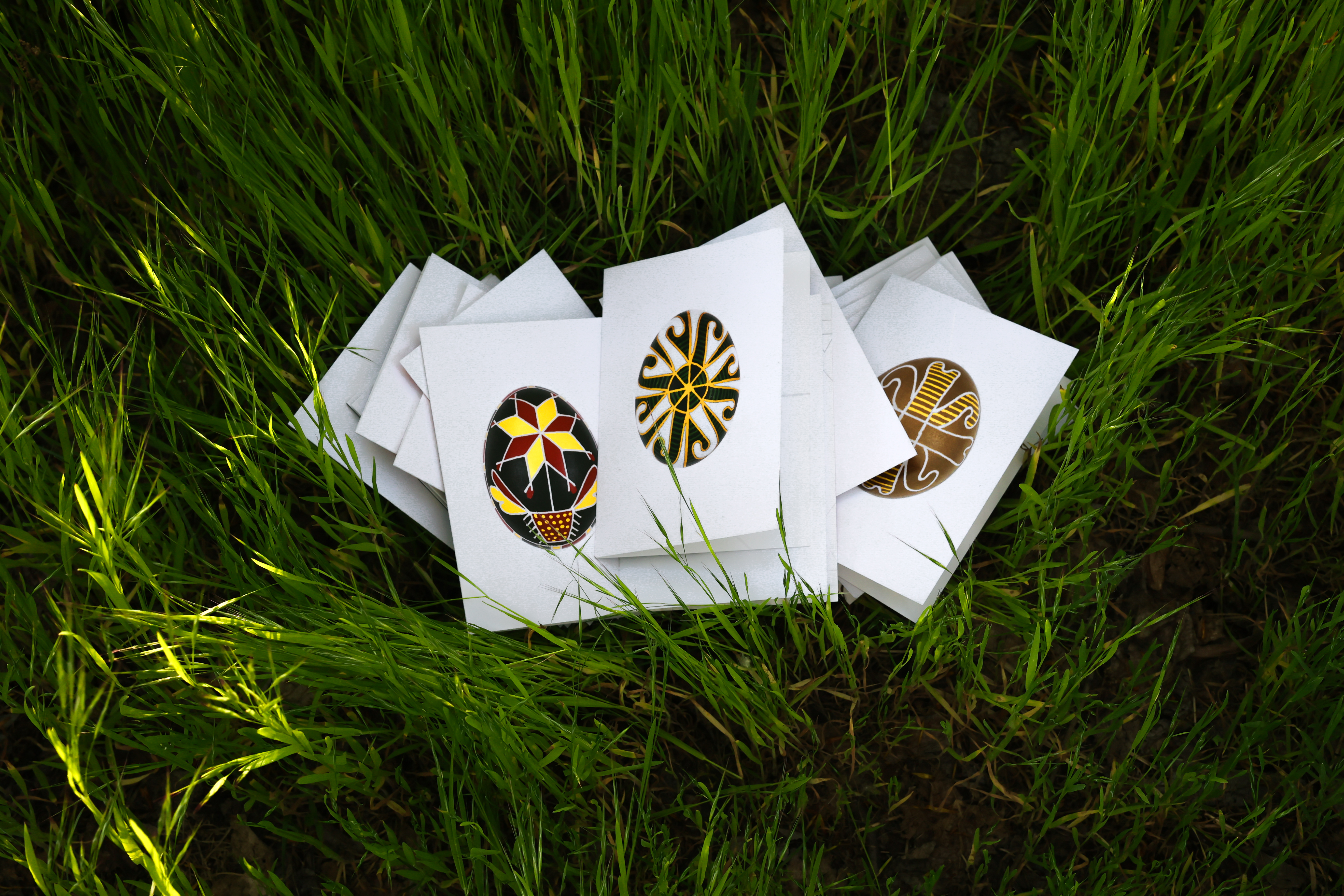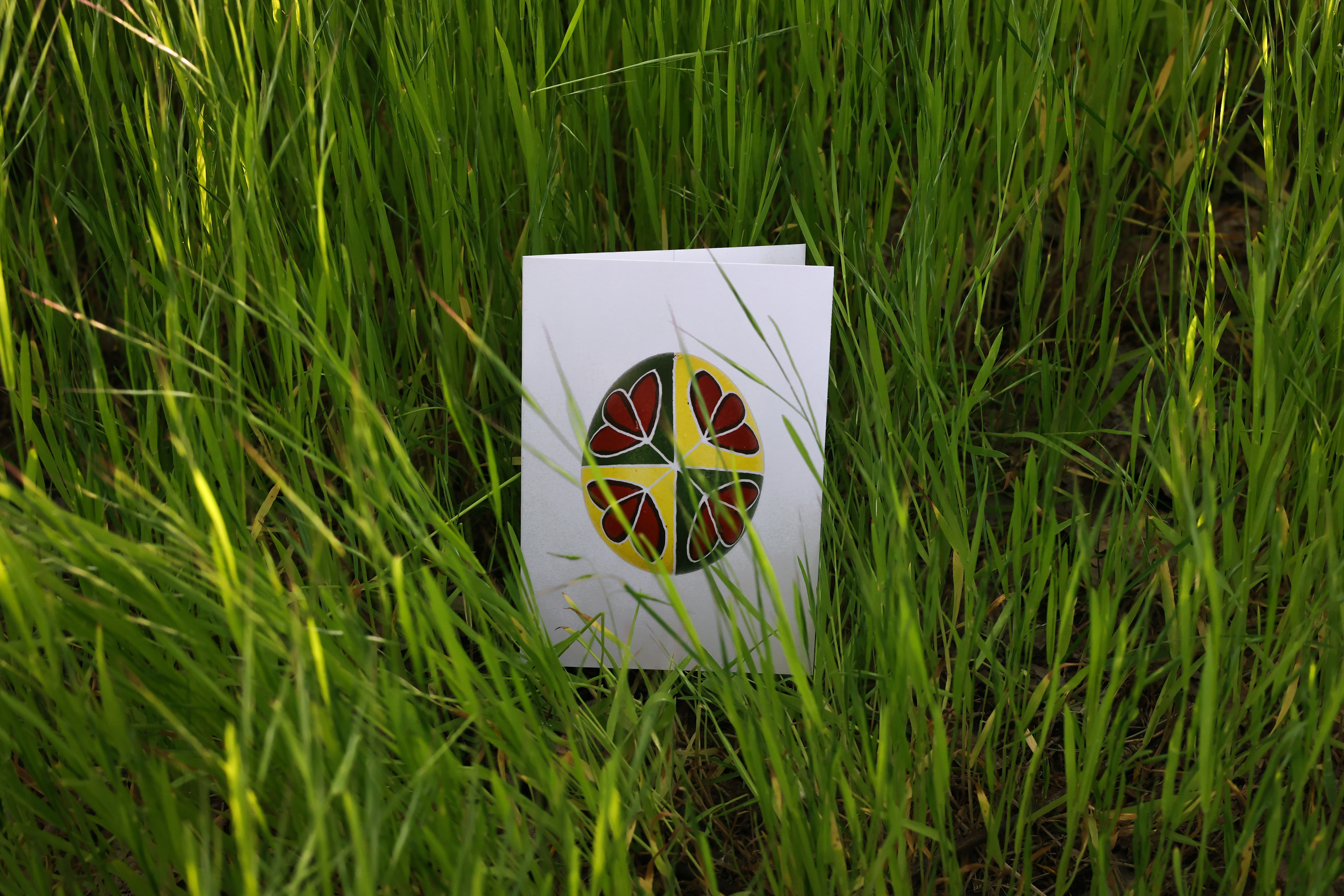Hi!
I am writing this letter to you from Kyiv, as usual. However, until yesterday morning, I believed I would write this letter from Ternopil, the cosy city in western Ukraine where my aunt lives. I had train tickets and anticipation that soon I would hug my dear people (my mom came to Ternopil for Easter).
But something went wrong. First, there was worrying news about possible attacks during the Easter holidays. My son and Victory (still a cat) were supposed to stay in Kyiv. Second, my son got a fever unexpectedly.
Okay, I don't want to bother you more with my broken plans. Life is going on. I am alive and even sane, I hope 🙈.
There won't be any news in today's letter. Sometimes, we all need a short break from them. As it is Easter today in Ukraine, I will tell you what Ukrainians had in their Easter baskets. It is more about our past, but we definitely preserve this tradition of filling our Easter baskets with yummy things.
 I prepared special photos for this letter. You will see pysanky (Easter eggs) from some regions of Ukraine. These are examples of pysanky from the end of the 19th and early 20th centuries.
I prepared special photos for this letter. You will see pysanky (Easter eggs) from some regions of Ukraine. These are examples of pysanky from the end of the 19th and early 20th centuries.
The other day, I went to the river with the cards and took many photos. People were passing by and looking at me curiously, and I imagined the questions in their heads:
- What is she doing in this grass? Is she fine? Where did she get these cards? Are these pysanky? Couldn't she find a better place?
But let's go back to Easter baskets.
Ukrainians have long believed that everything in a festive basket has special powers. Every Ukrainian housewife tried to make sure that the basket was rich. One of the must-have attributes was Easter cake or bread. They also put eggs (pysanky), dairy products (butter, cheese), meat (sausage, ham, bacon), salt and horseradish.
 Pysanka of Kherson Oblast. Source: Serhii Kulzhynskyi, Describing the collection of folk-made pysanky, 1899. Painted by Zoia Stashuk, 2024
Pysanka of Kherson Oblast. Source: Serhii Kulzhynskyi, Describing the collection of folk-made pysanky, 1899. Painted by Zoia Stashuk, 2024
EASTER CAKE
Traditionally, Ukrainian housewives baked their Easter cake, known as Paska, either on Maundy Thursday, Saturday, or Good Friday. Before baking, they washed their faces and dressed in festive clothes to create a special atmosphere in their homes. During the dough-making process, Ukrainian women baptized the dough and sometimes prayed. It was believed to be a sacred and significant event, and they tried not to quarrel or shout while preparing the Paska.
In many villages, it is still forbidden to allow anyone into the house while Easter cake is being baked, as it was believed that the festive bread could be evil-eyed.
Ukrainian housewives tried to bake large cakes to ensure a good harvest for the newly planted crops.
I still remember the big Easter cake we took to church when I was a child. It was so enormous that it didn't fit into the basket, so my grandmother wrapped it in a piece of cloth, and we carried it like that.
 Pysanka of Kharkiv Oblast. Source: Serhii Kulzhynskyi, Describing the collection of folk-made pysanky, 1899. Painted by Zoia Stashuk, 2024
Pysanka of Kharkiv Oblast. Source: Serhii Kulzhynskyi, Describing the collection of folk-made pysanky, 1899. Painted by Zoia Stashuk, 2024
EGGS
An important symbol of the Easter holidays is the egg, which has long been considered a representation of the beginning of creation and the germ of life. In the past, Easter eggs were typically dyed red using onion husks, which was the most affordable dye available. Other natural materials, such as apples, cherry branches, and bark, were also used to add colour.
Ukrainians believed children should sit down when painting Easter eggs so the hens would sit on them.
All the food from the Easter basket was eaten, and even the egg shells were used in various ways. They were fed to chickens or buried near the house, in the vegetable garden, or the field for a better harvest.
 Pysanka of Ivano-Frankivsk Oblast. Source: Vira Manko. Ukrainian flok-made pysanka, Lviv, 2005.
Pysanka of Ivano-Frankivsk Oblast. Source: Vira Manko. Ukrainian flok-made pysanka, Lviv, 2005.
Painted by Zoia Stashuk, 2024
PIGLET
During Easter, Ukrainians used to bake a piglet in the oven and then take it to church for a blessing. However, nowadays, ham, sausages, and lard are commonly placed in the Easter basket instead of a piglet. Ukrainians once believed lard could clear weeds from fields and was sometimes even used for medicinal purposes.
CHEESE
In certain regions, cheese was believed to be blessed to improve cattle's well-being. Cheese cakes were also made. Easter cheese cakes were made using a wooden mould shaped like a pyramid to represent Mount Calvary, where Jesus Christ was crucified.
 Pysanka of Odesa Oblast. Source: Serhii Kulzhynskyi, Describing the collection of folk-made pysanky, 1899. Painted by Zoia Stashuk, 2024
Pysanka of Odesa Oblast. Source: Serhii Kulzhynskyi, Describing the collection of folk-made pysanky, 1899. Painted by Zoia Stashuk, 2024
SALT
Several rituals are associated with consecrated salt. One of the most common is sprinkling salt around the house. This was done to neutralize the negative influence of witches, evil people, and other negative energies. Another ritual involves sprinkling Easter salt on cows and, in some areas, feeding it to them. It was believed that this would protect the cattle from evil spirits.
HORSERADISH
The tradition of blessing horseradish has its roots in Christian legends. According to one such legend, when the soldiers were preparing to crucify Jesus Christ, they brought four nails with them. However, a Gypsy came along and attempted to steal them. The soldiers attacked him, but he could only manage to grab one nail. While running away, the Gypsy stuck the nail in the ground. As a result, the soldiers had to use only one nail to nail Jesus' feet to the cross. And at the place where the Gypsy had stuck the stolen nail, a horseradish plant grew. That's why horseradish is put in the basket.
 Pysanka of Donetsk Oblast. Source: Zenon Elyjiw. Sixty Score of Easter Eggs, New York, 1994. Painted by Zoia Stashuk, 2024
Pysanka of Donetsk Oblast. Source: Zenon Elyjiw. Sixty Score of Easter Eggs, New York, 1994. Painted by Zoia Stashuk, 2024
A KNIFE AND MONEY
The Easter basket served a dual purpose in Ukraine, as it was used to hold Easter treats and carry objects to church. One popular tradition in Ukraine was the blessing of a knife, which was used to cut the consecrated Easter cake. It was believed that an unblessed knife should not be used for this purpose. Additionally, some regions practised the tradition of placing money in the Easter basket.
EMBROIDERED TOWEL
Women traditionally embroidered towels specifically designed to cover Easter baskets, which were believed to possess magical powers.
 Pysanka of the city of Kyiv. Source: Ivan Honchar. Ukraine and Ukrainians, Kyiv, 1970-1980s.
Pysanka of the city of Kyiv. Source: Ivan Honchar. Ukraine and Ukrainians, Kyiv, 1970-1980s.
Painted by Zoia Stashuk, 2024
I finished. I tried to make it interesting for you to read. Not sure whether it was like that.
As another topic generated a lot of interest, too, I will write an additional letter next week (Wednesday or Thursday). The topic is Prohibited Easter: What did the Soviets do to prevent people from celebrating Easter?
Please take care of yourself.
Sincere hugs,
Yaroslava
